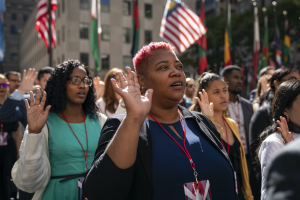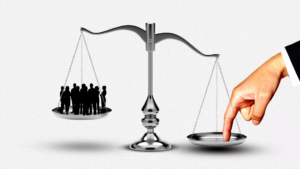The three projects will generate an estimated nine megawatts of power when completed.
The Green Energy Justice Cooperative recently placed first, second and fourth in the Illinois Power Agency’s second round of community-driven community solar project selection.
Being selected for this solar development program, made possible through the Illinois Climate and Equitable Jobs Act, represents an important step in developing and building clean energy projects in Illinois communities. The co-op, founded by environmental justice group Blacks in Green and local partners, is now applying for renewable energy credits totaling $12.5 million.
Green Energy Justice Cooperative’s proposals are for three solar developments that together will produce nine megawatts of solar power. The developments, planned for development in or near Aurora, Naperville and Romeoville, will bring down energy costs in low- and moderate-income households as well as Black and brown communities west of Chicago.
Once completed, the projects will allow households that don’t have access to or ownership of a rooftop to save money on their electric bills. Subscribers become co-owners of the cooperative and have a voice in the management and share in the profits generated.
‘We Have to Be Involved in Big Projects’
Nearly a decade ago, as part of his position at Heaven’s View Christian Fellowship in Peoria, Illinois, the Rev. Tony Pierce began organizing around climate issues and assisting in negotiations for the Illinois Future Energy Jobs Act. The bill, which passed in 2016, led to a solar workforce training program that Pierce helped found.
“If we’re talking about creating jobs that are going to move people out of poverty into the middle class, particularly with BIPOC people, then we have to be involved in big projects that could hire people at scale,” Pierce, the vice president of GEJC, said.
Blacks in Green developed the Green Energy Justice Cooperative with multiple community based organizations, including nonprofits and LLCs affiliated with Pierce’s church, in the Chicago area. Pierce said they wanted to develop and own these solar projects.
Pierce and other organizers weren’t completely satisfied with some of the 2016 law’s outcomes. Despite the fact that 40 percent of the Illinois population identify as people of color, BIPOC contractors ended up with less than 2 percentof the revenue from the Future Energy Jobs Act, according to Pierce.
Pierce returned to the state capital to negotiate what would become the Climate and Equitable Jobs Act. He knew they needed to create programs that would enable BIPOC contractors to benefit from the clean energy transition. Although the Future Energy Jobs Act created a community solar program that allowed subscribers to share a large solar project and collect credits for their share of the generated power, few of these projects ended up in Black and brown communities.
This story is funded by readers like you.
Our nonprofit newsroom provides award-winning climate coverage free of charge and advertising. We rely on donations from readers like you to keep going. Please donate now to support our work.Donate Now
The Climate and Equitable Jobs Act, passed in 2021, created the state’s community-driven community solar program. This program included more involvement from local communities and rules surrounding the projects meant a portion went specifically to Black and brown communities. The new program gets more BIPOC contractors and communities involved than the traditional community solar program.
People who participate in the solar training program will be doing much of the installation of the community-driven community solar projects, including those GEJC proposed. The developments are now on track to become one of the biggest non-utility-based solar developments owned by a clean energy co-op, according to BIG.
This type of solar development has been seen in other parts of the country, like those developed in Minnesota by Cooperative Energy Futures, a developer providing guidance to GEJC. Adesope is looking forward to seeing it further implemented in Illinois.
“I’ve seen disenfranchised communities that are usually at the receiving end of various programs where you have the imposition of models,” Adesope said. “But this model … every member has equal decision-making ability.”
Fellow
Lydia Larsen is a 2023 AAAS Mass Media Science and Engineering Fellow with Inside Climate News. She’s a graduate of the University of Wisconsin-Madison where she studied genetics and genomics and life sciences communication. While at UW, Lydia worked as an undergraduate research assistant studying how copepods (tiny crustaceans) adapt to temperature and salinity shifts caused by climate change. She also joined a science communication research group that studied scientific misinformation on social media. Lydia covered the science beat as a writer and editor for The Badger Herald, an independent UW student newspaper.




